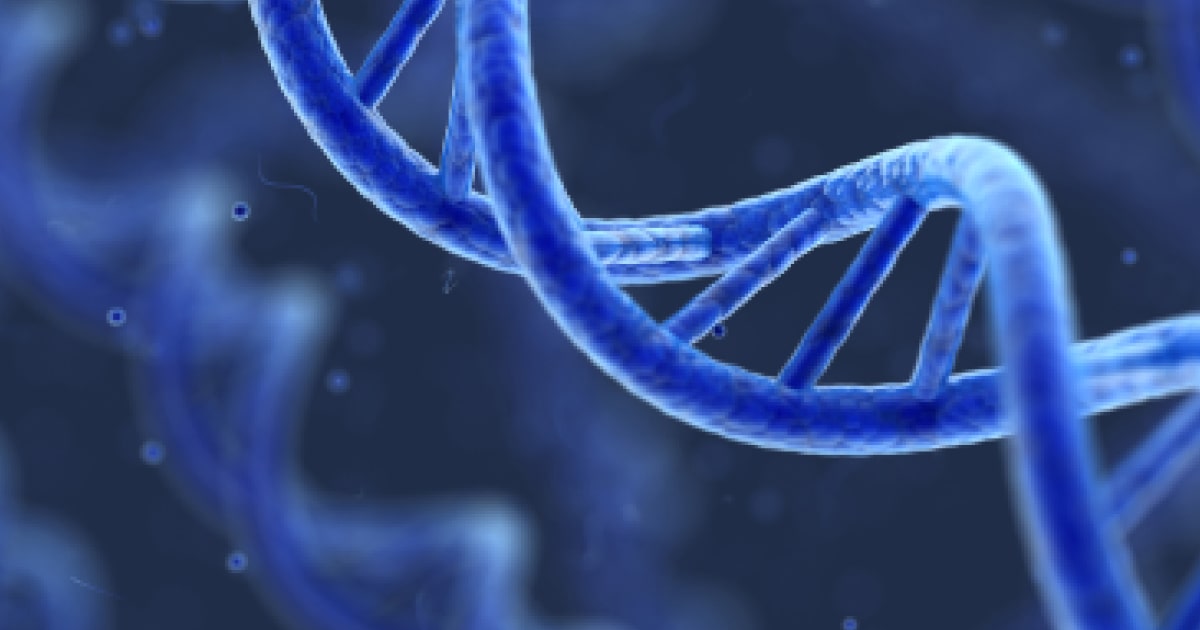
Expert Reviewed By: Dr. Brandon Colby MD
Noninsulin-dependent diabetes mellitus (NIDDM) with acanthosis nigricans and hypertension is a complex metabolic disorder that affects millions of people worldwide. Understanding the genetic basis of this condition and the importance of genetic testing can be crucial in diagnosing and managing this disease effectively. In this article, we will delve into the intricacies of NIDDM with acanthosis nigricans and hypertension, exploring its genetic components, diagnostic methods, and the role of genetic testing in providing a targeted therapeutic approach.
Understanding Noninsulin-Dependent Diabetes Mellitus with Acanthosis Nigricans and Hypertension
This disorder is characterized by three primary components: noninsulin-dependent diabetes mellitus, acanthosis nigricans, and hypertension. NIDDM, also known as type 2 diabetes, is a chronic metabolic condition in which the body becomes resistant to the effects of insulin, leading to high blood sugar levels. Acanthosis nigricans is a skin condition characterized by dark, thickened patches of skin, often found in body folds and creases. Hypertension, or high blood pressure, is a common comorbidity in people with NIDDM and can lead to serious health complications if left untreated.
Genetic Factors and Mutations
Research has identified several genetic factors that contribute to the development of NIDDM with acanthosis nigricans and hypertension. One study found that patients with insulin resistance, a key feature of NIDDM, had mutations in the insulin receptor gene1. These mutations can lead to impaired insulin signaling and, ultimately, insulin resistance.
Another study identified a pathogenic variant in the PPARγ gene as the cause of familial partial lipodystrophy type 3 (FPLD3), a rare genetic disorder that can lead to NIDDM, acanthosis nigricans, and hypertension2. This finding highlights the importance of understanding the genetic components of this complex disorder to provide targeted therapeutic approaches.
Diagnosing Noninsulin-Dependent Diabetes Mellitus with Acanthosis Nigricans and Hypertension
Diagnosing NIDDM with acanthosis nigricans and hypertension involves a thorough clinical evaluation, including a detailed medical history, physical examination, and laboratory tests. Hirsutism, or excessive hair growth, is often associated with this condition and can be evaluated using the Ferriman-Gallwey scoring system3.
Laboratory tests may include blood glucose levels, insulin levels, lipid profile, and hormonal tests to assess for underlying endocrine disorders. Imaging studies, such as ultrasound or magnetic resonance imaging (MRI), may also be used to evaluate for lipodystrophy or other structural abnormalities.
Role of Genetic Testing in NIDDM with Acanthosis Nigricans and Hypertension
Identifying Genetic Mutations
Genetic testing can be a valuable tool in diagnosing NIDDM with acanthosis nigricans and hypertension, as it can help identify specific genetic mutations associated with the disorder. By pinpointing these mutations, healthcare providers can gain a better understanding of the underlying cause of the condition and develop a personalized treatment plan tailored to the patient's unique genetic profile.
Targeted Therapeutic Approaches
Genetic testing can also play a crucial role in guiding targeted therapeutic approaches for patients with NIDDM with acanthosis nigricans and hypertension. For example, one study found that patients with FPLD3 caused by a pathogenic variant in the PPARγ gene experienced significant improvements in their HbA1c and dyslipidemia when treated with pioglitazone, a medication that targets the PPARγ pathway2. This finding underscores the importance of genetic testing in guiding personalized treatment strategies for patients with this complex disorder.
Understanding the Consequences of Obesity
Genetic testing can also help shed light on the relationship between obesity and insulin resistance in patients with NIDDM with acanthosis nigricans and hypertension. One study found that obese children with acanthosis nigricans had an additional receptor involved in the mechanism of insulin resistance4. This finding highlights the importance of understanding the genetic factors contributing to obesity and insulin resistance in this population and developing targeted interventions to address these issues.
In conclusion, understanding the genetic basis of noninsulin-dependent diabetes mellitus with acanthosis nigricans and hypertension is essential for accurate diagnosis and effective management of this complex disorder. Genetic testing plays a crucial role in identifying genetic mutations, guiding targeted therapeutic approaches, and shedding light on the consequences of obesity in this population. By embracing the power of genetic testing, healthcare providers can deliver personalized, evidence-based care to patients with this challenging condition.
About The Expert Reviewer
Dr. Brandon Colby MD is a US physician specializing in the personalized prevention of disease through the use of genomic technologies. He’s an expert in genetic testing, genetic analysis, and precision medicine. Dr. Colby is also the Founder of and the author of Outsmart Your Genes.
Dr. Colby holds an MD from the Mount Sinai School of Medicine, an MBA from Stanford University’s Graduate School of Business, and a degree in Genetics with Honors from the University of Michigan. He is an Affiliate Specialist of the American College of Medical Genetics and Genomics (ACMG), an Associate of the American College of Preventive Medicine (ACPM), and a member of the National Society of Genetic Counselors (NSGC)